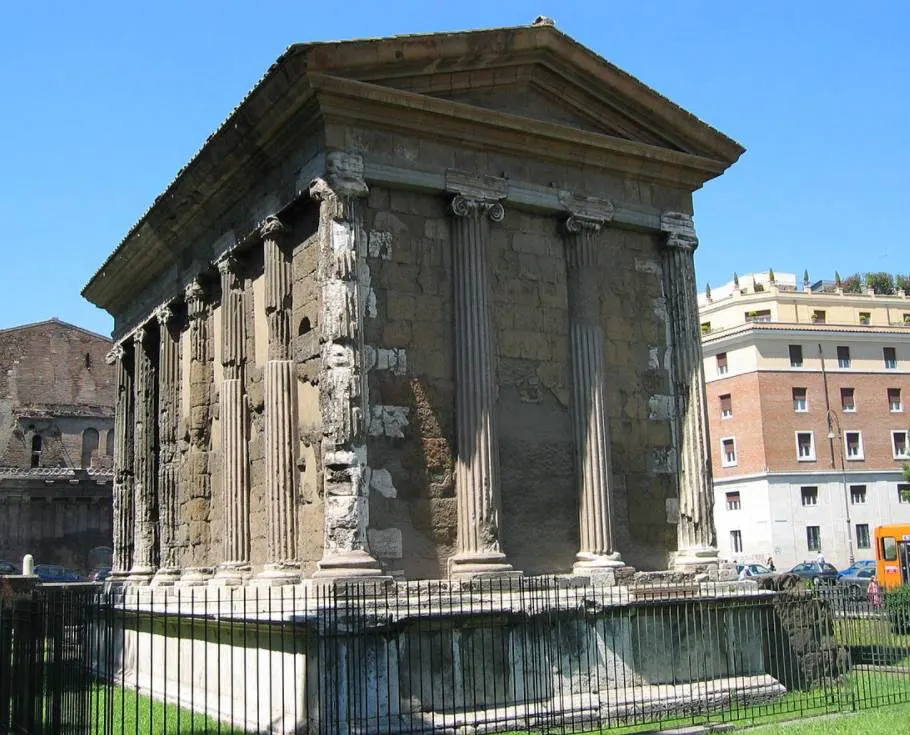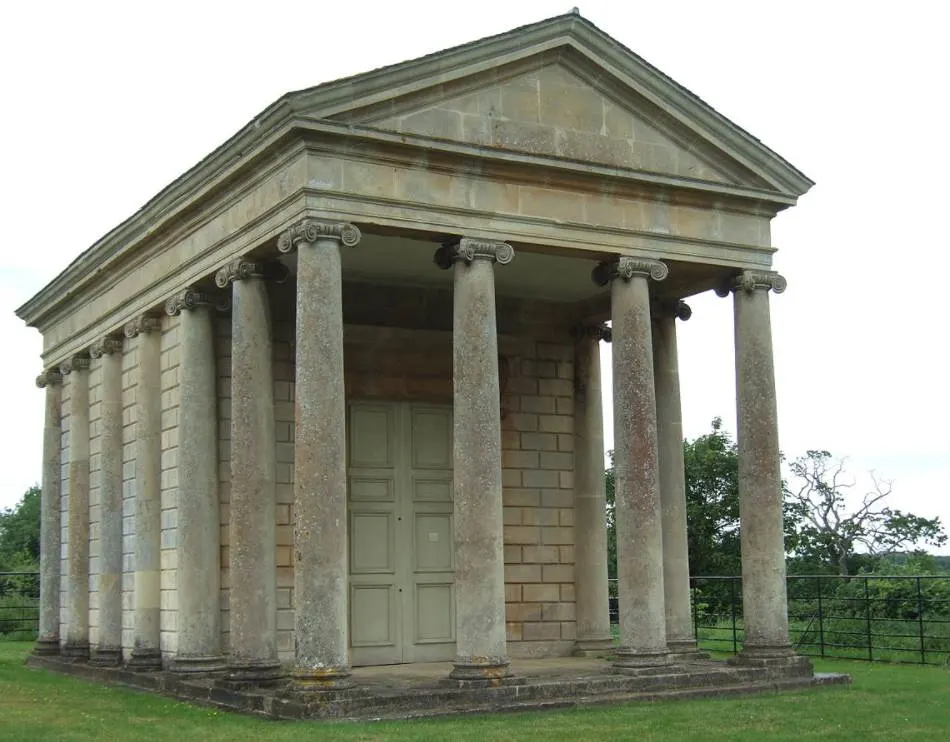If you ever plan to visit Rome, then you can expect to come across a wide variety of ancient monuments and structures. Many of these are crumbling, not unexpected since many were built around 2,000 years ago.
In this article, we’ll take a closer look at some of the most interesting facts about the Temple of Portunus, one of the best-preserved Roman temples in the city.
1. The original temple was built in the 4th or 3rd century B.C.
The Temple of Portunus is a temple that was originally built during the Republican era of ancient Rome. Even though exact details remain unclear, it’s assumed it was built somewhere in the 4th or 3rd century B.C.
The structure we see today was built in the Ionic Order and dates back to between 120 and 80 B.C. This means that this remarkable little temple is well over 2,000 years old, quite amazing, don’t you think?

2. It’s located in the heart of Rome’s historical center
The temple is located in an area that is referred to as the Forum Boarium. It was known as the “forum venalium” in ancient Rome and was one of the multiple marketplaces of the ancient city. Today, the area is known as the “Piazza del Bocca della Verità.”
This particular forum was a food market located just near the Tiber River. It was here that cattle and other goods arrived from the main port of the city near Ostia, about 24 kilometers (15 miles) southwest of Rome.
The forum overlooked the Port Tiberinus, the port located right next to the center of the city. This means that this area must have been quite bustling as cattle and goods arrived in the city and marketplace vendors sold their goods.
3. It has gone by two different names throughout its history
Even though the temple is known today as the “Temple of Portunus,” its exact purpose wasn’t too clear during the Renaissance, a period in Europe that followed the dark Middle Ages.
During this period it was referred to as the “Temple of Fortuna Virilis” which translates to “fortune in virility.” The temple is still sometimes referred to as such today.

Even though the exact dedication of the temple remains unclear, it’s assumed by historians that it was dedicated to Portunus, the ancient Roman god of keys, doors, ports, and livestock.
This makes perfect sense since the location of the temple was exactly where livestock arrived in the city during those days at the port near the city center. This also means that the Temple of Portunus was the main temple dedicated to this god in the city.

4. The form of the building is referred to as pseudoperipteral
This is far from being the largest temple that was ever built in ancient Rome, but most definitely one of the best-preserved ones. We can see the design of the temple and the columns are relatively intact as they were constructed over 2,000 years ago.
The temple features a portico in the front and is lined with 5 columns at the long sides of the temple and 4 columns at its back, all constructed in the Ionic Order.
The columns of the tetrastyle portico are two levels deep and are free-standing. The other columns are integrated into the design of the “cella” or “inner chamber” of the temple.
This particular style with both columns that are embedded in the outer walls of the temple and free-standing columns in the portico is referred to as “Pseudoperipteros.” Another great example of a well-preserved Roman temple using this style is the Maison Carrée in Nîmes.

5. There’s a reason why it’s one of the best-preserved temples in Rome
So how is it possible that this relatively small structure was able to withstand the past 2 Millennia? This is especially remarkable because Pagan structures were destroyed in rapid numbers starting in the 4th century.
The persecution of pagans in the late Roman Empire, something that started during the reign of Constantine the Great (306-337 A.D.), is indirectly the reason why the temple is in relatively mint condition today.
The reason is the same as why the Pantheon in Rome has been preserved so well, and that’s because it was transformed into a church. This church was officially dedicated to “Santa Maria Egiziaca” or “Saint Mary of Egypt” in the year 872.
6. The temple looked originally quite different than it does today
Even though the core structure of this relatively small building has been preserved remarkably well, it didn’t look nearly as it does today in the first centuries of its existence.
The cire structure was built using both tufa and travertine stones, and the temple was finished using stucco. This stucco has been lost over the centuries which means the walls of the cella are visible today.
We do imagine that the temple looked completely bright white as well, a shiny appearance it has lost throughout history as well.

7. There’s another relatively well-preserved temple located nearby
The temple is located just near the Tiber River and not too far away from the utmost southeastern tip of the only River island inside the city of Rome, Tiber Island.
The “Foro Boario” is an amazing place to visit in Rome. That’s not just because it’s located on the northwestern tip of what used to be the immense Circus Maximus, but because it features another remarkably well-preserved ancient temple.
Just nearby you can find the “Temple of Hercules Victor,” a circular temple known as a “tholos” that was built in the late 2nd-century B.C.
This not only means that it’s older than the Temple of Portunus, but also that it’s the oldest surviving marble building in Rome. This notion makes it one of the most fascinating monuments in the city.

8. A replica of the temple was built in Somerset in the 18th century
The Temple of Portunus has been an influential building and its architectural design was reused for multiple structures all around the world.
The most remarkable one is a replica referred to as a “folly” that was built in the small village of Goathurst, Somerset, England. It was completed in the 18th century and is called the “Temple of harmony.”
It’s part of the immense Mill Wood, a pleasure garden part of the Halswell House that covers an area of 7 hectares (17 acres). It can only be visited on Sunday afternoons during the Summer months.
The replica of an ancient Roman temple remains a remarkable sight in the countryside of Southwestern England, don’t you think?

